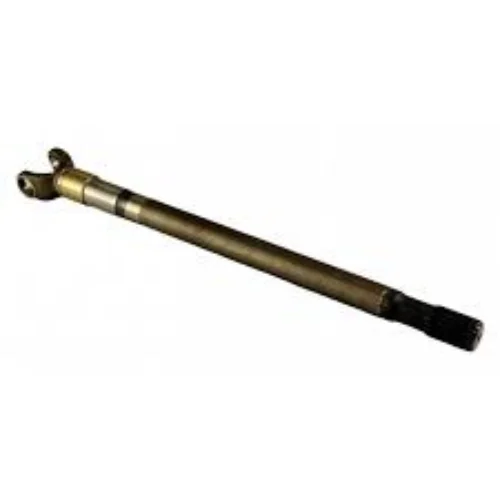To expand your news reach, consider advertising with our media partner, Patch Media, at https://heypapipromotionsmedia.town.news/. Patch is a nationwide news network comprising over 1,000 hyperlocal websites dedicated to community news across the United States. For press release distribution services, please call or visit https://heypapipromotions.com/advertise.

What Is Vulkollan?
Vulkollan is a high performance polyurethane elastomer developed from raw materials such as polyester polyols, diisocyanate, and a cross linking agent. Manufactured under strict conditions, Vulkollan is known for its superior mechanical properties, including exceptional elasticity, abrasion resistance, and load bearing capacity.
What Are Vulkollan Wheels?
Vulkollan wheels are industrial wheels made from Vulkollan material. This type of vulkollan wheel is engineered to endure the toughest conditions while delivering excellent performance. They are available in various configurations, including Vulkollan heavy duty wheels, Vulkollan heavy load wheels, and Vulkollan rollers, each tailored to meet specific requirements.
Advantages of Vulkollan Wheels
1. High Load Bearing Capacity
One of the standout features of Vulkollan wheels is their ability to handle extreme loads without deforming or compromising performance. This makes them ideal for applications involving heavy machinery and equipment.
Vulkollan wheels exhibit excellent resistance to wear and tear, ensuring a long service life even under harsh conditions. Their durability reduces the need for frequent replacements, saving time and costs.
Thanks to the inherent properties of Vulkollan material, this type of vulkollan roller wheels are highly resistant to abrasion. This is particularly beneficial in environments where surfaces are rough or uneven.
Vulkollan wheels are resistant to oils, greases, and many chemicals, making them suitable for use in industrial settings where exposure to such substances is common.
The elasticity of Vulkollan ensures smooth rolling, reducing the effort required to move heavy loads. This improves efficiency and minimizes strain on machinery or operators.
Vulkollan wheels offer excellent shock absorption, protecting both the transported goods and the flooring from damage.
Vulkollan material performs well across a wide temperature range, making these wheels suitable for applications in both hot and cold environments.
Disadvantages of Vulkollan Wheels
1. Cost
Due to their superior properties and specialized manufacturing process, Vulkollan wheels are more expensive than standard polyurethane wheels.
While Vulkollan offers excellent mechanical properties, prolonged exposure to moisture can affect its performance. Proper care and maintenance are necessary in humid environments.
Although resistant to many chemicals, Vulkollan may degrade when exposed to strong acids or bases.
Applications of Vulkollan Wheels
Vulkollan wheels are used in a variety of industries due to their versatility and reliability. Below are some of the most common applications:
Vulkollan heavy duty wheels and rollers are widely used in forklifts, pallet trucks, and conveyor systems. Their high load bearing capacity ensures smooth and efficient material handling in warehouses and logistics centers.
Vulkollan wheels are often found in heavy machinery used in manufacturing plants and construction sites. Their durability and ability to withstand extreme conditions make them indispensable in these settings.
In the automotive sector, Vulkollan roller is used in assembly lines and testing equipment. Their precision and resilience help ensure the smooth operation of various processes.
Vulkollan rollers play a crucial role in textile manufacturing, where they are used to transport and guide fabrics. Their non marking properties help preserve the quality of the materials.
The aerospace industry relies on Vulkollan wheels and rollers for handling delicate equipment and materials. Their shock-absorbing properties help protect valuable components during transport.
Vulkollan wheels are also used in amusement park rides and recreational equipment due to their ability to handle dynamic loads and provide smooth operation.
Types of Vulkollan Wheels
1. Vulkollan Heavy Duty Wheels
These wheels are designed for industrial applications requiring extreme load capacity and durability. Commonly used in forklifts and heavy machinery, they provide reliable performance under challenging conditions.
These wheels are specifically engineered for applications involving very high weight loads, such as in manufacturing plants or logistics centers. They are capable of withstanding intense pressure without deformation.
Vulkollan rollers are used in conveyor systems, textile machines, and other applications where continuous rolling is required. They ensure smooth and efficient operation, even under heavy loads.
How to Choose the Right Vulkollan Wheels?
1. Assess Load Requirements
Determine the maximum weight the wheels need to support. For heavy-duty applications, choose Vulkollan heavy duty wheels or Vulkollan heavy load wheels.
Consider factors like surface type, temperature, and exposure to chemicals when selecting the appropriate wheels.
For environments with rough or uneven surfaces, opt for abrasion-resistant Vulkollan wheels to ensure longevity.
If maneuverability is essential, choose Vulkollan wheels with a swivel mechanism for enhanced mobility.
Maintenance Tips for Vulkollan Wheels
Regular Inspection: Check for signs of wear or damage to ensure optimal performance.
Keep Them Clean: Remove dirt and debris to prevent abrasion and maintain smooth rolling.
Avoid Overloading: Adhere to the recommended load limits to prevent deformation or damage.
Protect from Moisture: Store wheels in a dry environment to prevent moisture-related issues.


